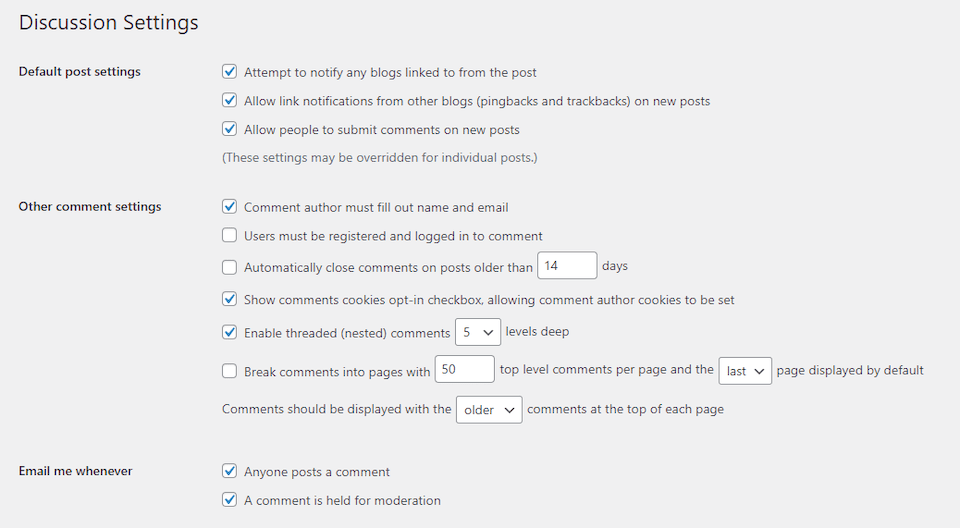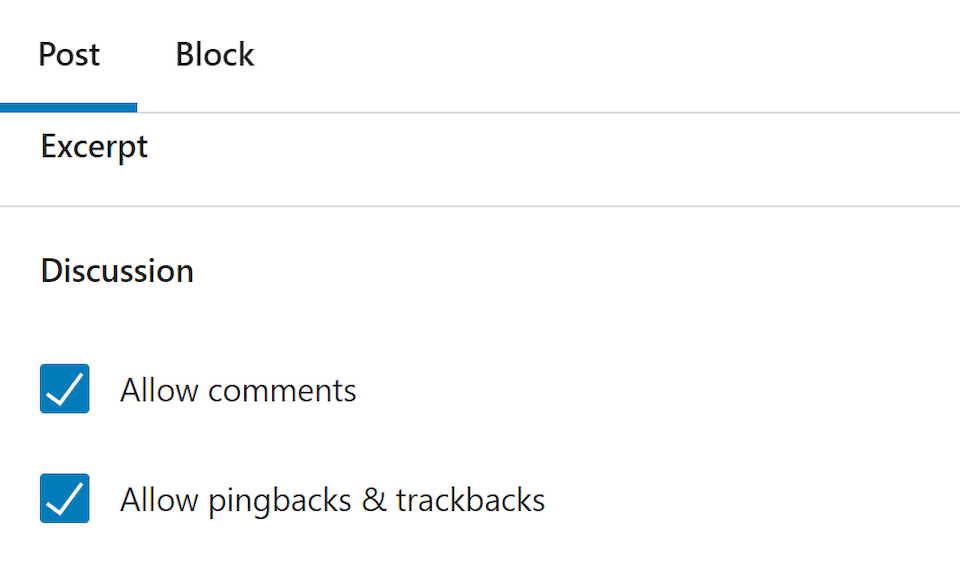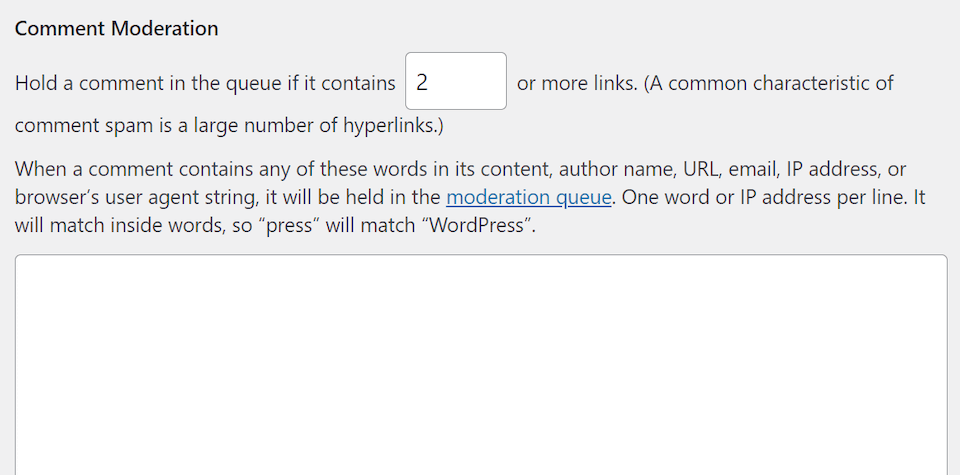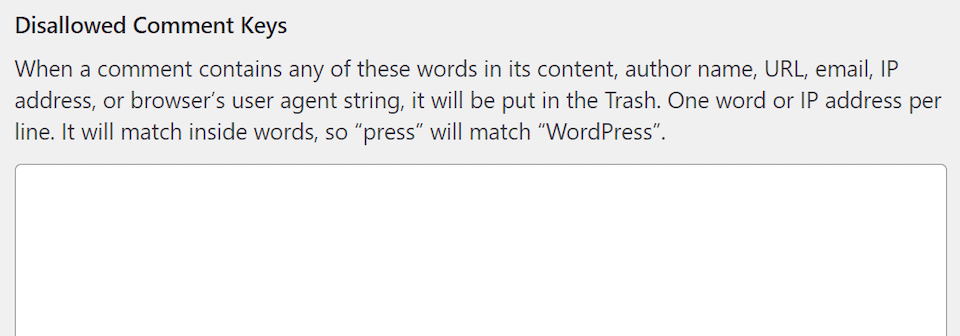WordPress was originally a blogging platform, and it’s still often used for that purpose. Comments are a key component of most traditional blogs, and an easy way to drive engagement from your readers. To help you make the most of that feature, WordPress includes a handful of discussion settings that you can configure to meet your site’s needs.
By modifying your discussion settings in WordPress, you gain full control over how users interact with your comments sections. In this article, we’ll go over all of the relevant options that are available and talk about what they do.
Let’s get to it!
Subscribe To Our Youtube Channel
An Introduction to the WordPress Discussion Settings
Finding the discussion settings in WordPress is simple. Log in to your admin dashboard and go to Settings > Discussion:

Throughout the following sections, we’ll explain what each of the options on this screen enables you to do. That includes configuring how comments, notifications, moderation, and avatars work on your website.
Note, there are some really impressive comment plugins that bring even more options, customizations, and new horizons to the WordPress commenting system.
How to Configure Your WordPress Discussion Settings
Without further ado, let’s take a closer look at the individual options on this vital settings screen. After you make any changes to your discussion settings in WordPress, remember to save them before you leave the page.
Basic Comments Settings
By default, WordPress includes a comments section on each of your site’s posts. You can also enable comments on specific pages if you want to offer visitors additional opportunities to share their thoughts:

You can disable the comments section for specific posts and pages by opening the Block Editor and expanding the Discussion tab in the sidebar. Just deselect the Allow Comments checkbox:

If you want to disable comments on all posts, however, you can do so from your WordPress Discussion Settings screen. The first section on this page includes three options under the Default post settings:

The first two settings in this section relate to pingbacks. When you link to another website via a post or a comment, WordPress will attempt to send a “ping” or notification. If the other website is also built with WordPress, that ping will appear in its comment moderation queue.
Disabling Attempt to notify any blogs linked to from the post will turn off ping notifications from your site. Deselecting Allow link notifications from other blogs (pingbacks and trackbacks) on new posts will block pings from other sites to yours on all future content. There are pros and cons to these features, so it’s important to learn about the consequences before deciding to enable or disable them.
Finally, the last option in this section enables you to turn off WordPress comments altogether. Some site owners feel this is preferable to having to moderate comments across posts. However, it also means that you lose out on valuable user engagement opportunities. Once again, it’s important to weigh the benefits and drawbacks carefully when it comes to this setting.
Advanced Comments Settings
For finer control over your discussion settings in WordPress, you can look to the next set of options on this screen:

Here, you can decide if a user needs to provide their name and email address to leave a comment. This can help cut down on spam and “trolling”, as it removes the element of anonymity that makes some negative commenters particularly bold. It can also help you build out your email list, or reach out to individuals who are seeking customer support.
To take this a step further, you can require that users register and log in before they can leave comments. This is particularly beneficial to membership sites and other exclusive online communities.
Another option available here is whether you want to “shut down” the comments section after a post has been live for a specific number of days. This is a simple way to enable readers to engage thoughtfully with your content while also minimizing your moderation workload. Instead of having to wade through submissions across your entire blog, you’ll only have to keep an eye on discussions for your most recent posts.
Other settings that you can configure here include:
- Cookie opt-ins: Determine whether to enable comment author cookies, which save users’ information in their browsers so they can leave comments more efficiently in the future.
- Nested comments: Specify whether you want to let users reply to each others’ comments, and create threads within the post discussion section.
- Pagination options: Decide how you would like to organize and display comments once they reach a certain volume.
Finally, you can define the chronological order in which comments will appear. The default WordPress setting is to show older comments at the top of the section, which is what most users will be familiar with.
Discussion Notification Settings
Next, you can determine how you would like WordPress to notify you when users submit new comments. By default, you’ll receive an email whenever someone contributes to a discussion on your website:

New comments are also held in a moderation queue, so you can manually approve them before they become visible on the front end of your site. You can access this list by navigating to the Comments section of your WordPress dashboard:

Unless you’re running a new blog that doesn’t receive many comments, keeping email notifications turned on can become unwieldy. Too many updates can take over your inbox. For many site owners and blog managers, it’s far more practical to simply check the moderation queue periodically.
Comment Moderation Settings
Comment moderation is essential for any WordPress website. Without some intervention, you’re likely to receive a lot of spam, as well as the occasional inappropriate or heated argument between users.
As we already mentioned, WordPress provides a moderation queue so you can approve new comments before they go live. You can also delete submissions or mark them as spam.
In your WordPress discussion settings, the options listed under Before a comment appears give you a few options as to how you would like to handle comment moderation:

The two main options here are to manually approve every single comment that comes in, or to only manually approve those from new users. You can turn on either of these settings, or leave them both deselected to disable moderation altogether. However, we don’t recommend the latter route, as it can make your site appear unprofessional or untrustworthy if your comments sections are full of spam.
Whitelisting previously approved commenters can decrease your workload, but might also enable some unsavory discussions to slip through the cracks. To help with this, you can fine-tune what’s allowed in your comments sections using the discussion settings under Comment Moderation:

Here, you can hold comments for moderation if they include more than a set number of links, which can help decrease instances of spam. You can also list specific terms and even IP addresses that should trigger comments to moved to the queue. This can help you weed out submissions that may be offensive or otherwise malicious.
Finally, to take this concept one step further, WordPress includes an option to block specific terms from your comments entirely:

If a comment includes any of the terms you list here, it will be automatically moved to the trash so you don’t even have to waste time moderating it.
Avatar Settings
The last section of the WordPress discussion settings is all about avatars. By default, WordPress enables avatars for all users who share their thoughts on your website. If they have a Gravatar account, WordPress will try to use that to display a profile photo for a given user.
You can choose to disable avatars altogether if you prefer. There’s also an option to disable images that may not be suitable for all audiences:
![]()
Last but not least, WordPress includes an option to set a default avatar for users who don’t have Gravatar accounts or haven’t set up a profile photo. You can choose from among seven built-in options, including a blank space:
![]()
Avatars add a nice touch of personalization to your comments section, so enabling them can help your readers feel more invested in your content and sharing their opinions. However, they’re not strictly necessary from a functional standpoint, so whether to enable them is completely up to you.
Conclusion
WordPress comments sections are a key component of any blog or website that wants let visitors share their thoughts. However, it’s all too common for un-moderated discussions to descend into chaos.
Fortunately, you can fully customize all of your website’s discussion settings in WordPress. In addition to enabling or disabling comments on posts and pages, you can specify how they should be displayed, who can post them, what moderation guidelines you want to implement, and whether to display users’ avatars alongside their thoughts.
Do you have any questions about how to tweak the discussion settings in WordPress? Let’s talk about them in the comments section below!
Featured Image via PureSolution / shutterstock.com









Is it nessecary to get a plugin if one wants to just completely disable all comments / discussions, or can that be done from the settings?
Hi Hans. You can completely disable comments from the settings – see the “Basic Comments Settings” section above. If you have existing comments on your site you will have to manually remove them, but you can do this in bulk from the comments moderation screen in your dashboard.
I love these WordPress settings posts, Will. Even if I’ve been using WordPress for years, I always learn something new. 🙂
Thanks, Andrej! Glad to hear they’re useful to you.